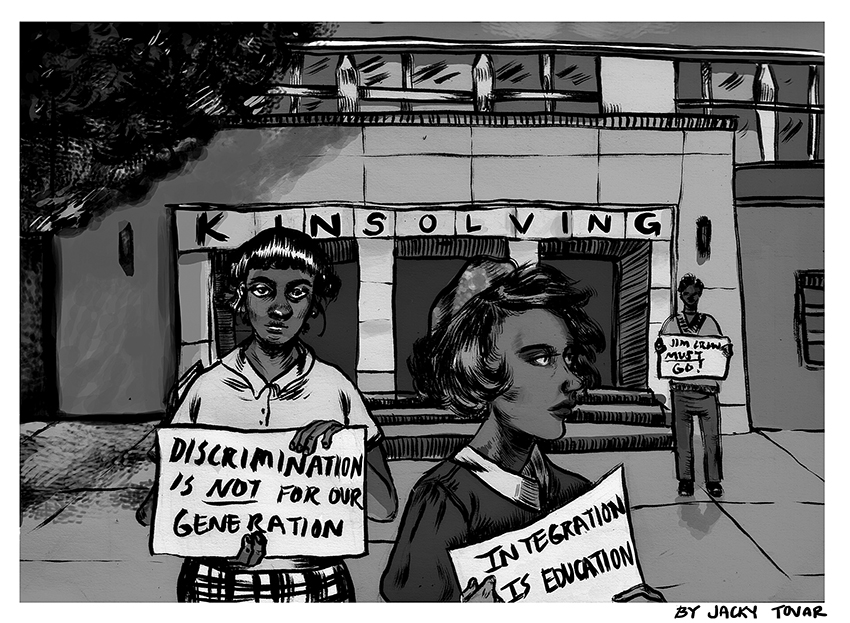On a mid-October evening in 1961, 18-year-old sophomore Sherryl Griffin walked beside two other female African-American students to stage a sit-in at UT’s Kinsolving dorm. The words “white people only” were not written in Kinsolving’s handbooks, yet University officials forced the three black students to leave.
“On my way, I had a lot of thoughts about what would happen,” Griffin, now 72 years old, said. “I didn’t know if my time at the University would be jeopardized, if I would be forced to leave, or if somebody would come and try to arrest me.”
Two months after the Kinsolving sit-in, Griffin filed a lawsuit against UT that led to the integration of its residence halls.
According to “The Time is Now,” a piece she wrote for The Daily Texan in 1961, black female students were only allowed to live at Whitis Dormitory and Almetris Co-op. San Jacinto Dormitory D and an isolated wing of the Brackenridge dorms were the only residence halls available for black male students.
“The fact that the officials fostering a segregation policy believe that Negroes are subordinate and unequal University students to be set off from other students in their ‘own’ living quarters angers me,” Griffin wrote.
The discrimination could be seen from the outside. Griffin said residence halls for black women were fragile, two-story, wooden-framed houses with no more than a 100-person capacity.
The Kinsolving dormitory, however, would fit about 750 people in multiple stories built with brick or stone.
In the midst of the 1962 lawsuit, Dr. Martin Luther King, Jr. visited campus to deliver a speech at the Union Ballroom to discuss ongoing segregation in the southern states. At the time, only .9 percent of the student body was black, but a full-capacity crowd of 1,200 came to hear the speech and gave King a standing ovation when it ended.
“Old Man Segregation is on his deathbed,” King said. “The only question is how expensive the South is going to make the funeral.”
Facing political heat from the lawsuit and visit from King, Chancellor Harry Ransom told Griffin to withdraw the suit in spring 1964, two months before President Lyndon B. Johnson gave the commencement address at graduation. The University wanted to avoid legal battles and “voluntarily” integrate the dorms on its own.
“That was part of the reason why the University wanted to integrate as fast as possible,” Griffin said, “So that when the President of the United States came, the University would not still be involved in the punitive legacy of our lawsuit.”
UT kept its promise and made its official announcement to integrate all residence halls on campus during the Board of Regents meeting held May 16, 1964.
According to the official minutes of the meeting, “the Board completed its task of ‘integration with all deliberate speed’ as promised, and without troops, marshals, violence or bloodshed.”
Fifty-five years later, in celebration of Black History Month, Griffin returned to UT as a panelist for an event called ‘EnGENDERing Power on the 40 Acres: The Story of Integration’ on Feb. 24. She joined a conversation as a leader who paved the way for women of color to be integrated at UT.
“It’s like a relay. The relays are decades of various generations and various movements as progress is made,” Griffin said. “I was willing to try and willing to be heard so that those people that are behind us can have it better and have a door open for them. This continues today.”





















